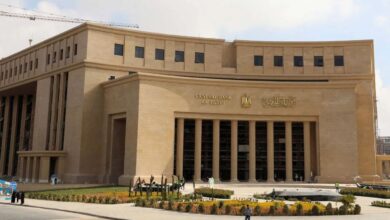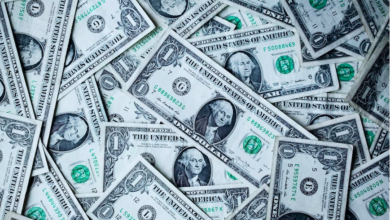
Economists have attributed the recent rise in the US dollar against the Egyptian pound to a combination of domestic and international factors.
These include the US Federal Reserve’s continued interest rate hikes, which have made the dollar more attractive to foreign investors, reducing inflows into emerging markets like Egypt.
Additionally, the global surge in commodity prices, especially oil and gold, has put further pressure on the local currency as Egypt relies heavily on dollar-denominated imports to meet domestic demand.
Furthermore, Egypt’s economy is grappling with a trade deficit, as the value of imports surpasses that of exports.
This imbalance has intensified the demand for dollars, exacerbating the pressure on the Egyptian pound. When combined with other factors, such as rising global interest rates, this has led to a significant depreciation of the Egyptian currency.
No major devaluation planned for the Egyptian pound
Cabinet Spokesperson Counselor Mohamed al-Hamasy stated that Prime Minister Mostafa Madbouly clearly indicated in the weekly press conference that Egypt will not witness a ‘significant flotation‘ like last March.
“This means that we will not see a large jump in the exchange rate, but rather a movement based on supply and demand,” he added.
In a phone-in to the ‘Sala al-Tahrir’ program, the government spokesperson added that the flexible exchange rate increase is based on supply and demand.
He explained: “When tracking the exchange rate over a period, we see ups and downs within a certain price margin, similar to the exchange rate in any country in the world.”
The state, in coordination with the Central Bank, is committed to maintaining a flexible exchange rate policy and providing the market’s needs through various dollar resources, he said, despite the decline in Suez Canal revenues.
However, the state has various resources from remittances, exports, and tourism.
He assured that the state, in coordination with the Central Bank, will provide the state’s needs of foreign currency (dollars).
An increase in foreign reserves
The Central Bank announced on Wednesday an increase in net foreign reserves to $46.94 billion at the end of October, compared to $46.74 billion at the end of September, an increase of $200 million.
The value of foreign currencies included in the reserve recorded $35.497 billion at the end of October, compared to $35.996 billion at the end of September, while the balance of special drawing rights increased to about $293 million in October, compared to $20 million at the end of September.
The Central Bank explained that the value of gold reserves included in the foreign exchange reserves increased to $11.154 billion at the end of October, compared to $10.723 billion at the end of September.
Dollar exchange rates steady across multiple Egyptian banks on Friday
The Egyptian pound held steady against the US dollar on Friday, maintaining its recent upward trend in local banks, according to the latest official data.
The Central Bank of Egypt (CBE) fixed the dollar exchange rate at LE49.24 for buying and LE49.34 for selling, reflecting a period of relative stability after the fluctuations witnessed in recent days.
This rate serves as a benchmark for other banks to determine their daily exchange rates.
The National Bank of Egypt, Bank of Egypt, Cairo Bank, and Al Baraka Bank were all trading the dollar within a narrow range, with buying rates hovering around LE49.22 and selling rates slightly above LE49.32.
The Suez Canal Bank, Crédit Agricole Egypt, Bank of Alexandria, Housing and Development Bank, and Abu Dhabi Islamic Bank have also maintained relatively stable dollar exchange rates on Friday. These banks reported buying rates ranging from LE49.25 to LE49.28 and selling rates between LE49.35 and LE49.37.



